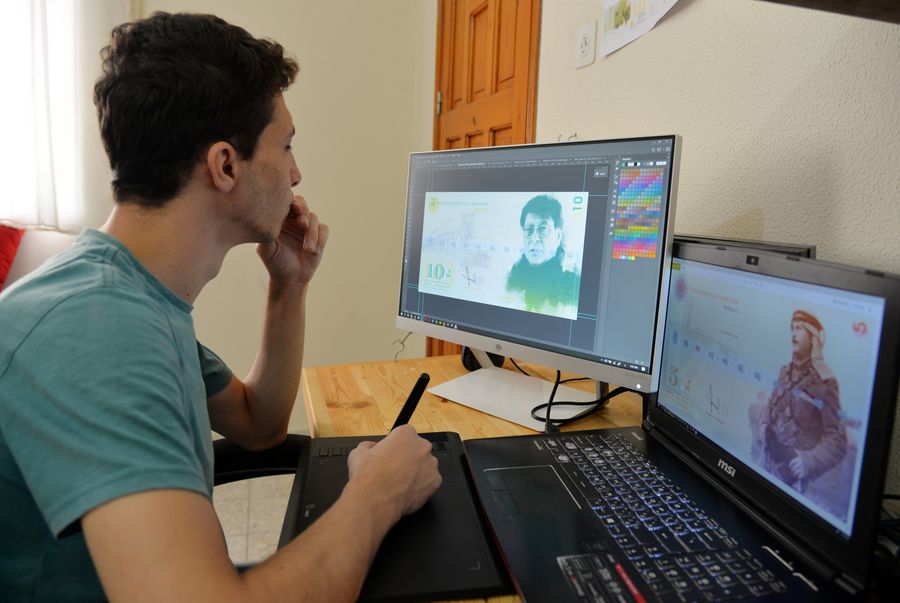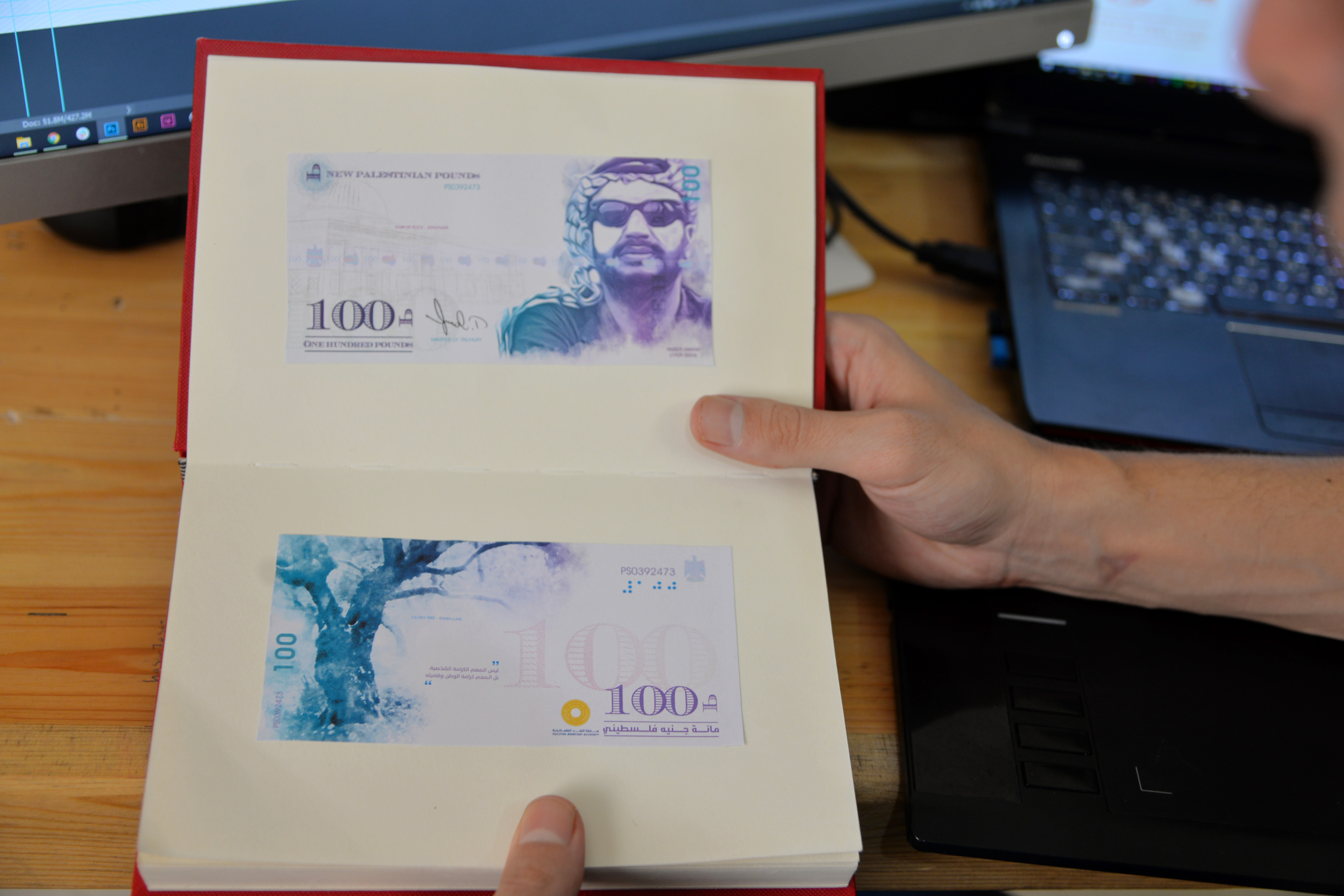
Palestinian young man Jihad Najji seen works on his computer inside his home in Gaza City on Oct. 23, 2019. (Rizek Abdeljawad/Xinhua)
Jihad Najji, a young Palestinian engineer, calls for the renovation of the old Palestinian currency with his new designs of five famous symbolic and historic personalities, including the late Palestinian leader Yasser Arafat.
GAZA, Oct. 22 (Xinhua) -- A young Palestinian engineer launched an initiative to revive the ancient Palestinian pound in a contemporary way that mimics a real paper currency by adding symbols of famous Palestinian landmarks and personalities to his designs.
Jihad Najji, 29, from Gaza, initiated the renovation of the old Palestinian pound which had stopped to be used since the state of Israel was established in 1948.
Najji, who studied computer engineering in Gaza and became an electronic designer, told Xinhua that he has been trying to find for himself a new project that would make him different and special from others, adding "finally I found the idea of reviving the old Palestinian pound."
"The idea has coincidently crystalized at the end of 2017 when I met with a British friend and we had an argument on why the Palestinians don't have any financial currency and why the old Palestinian pound had gone," said Najji.
What has urged Najji to adopt the initiative is that the Palestinian people don't have their own currency and they depend on three different kinds of currencies, namely Israeli shekel, the U.S. dollar, and the Jordanian dinar.
"The national currency is considered as one of the most important bases in any society because it is a symbol of sovereignty, and the identification of symbols of personalities and milestones placed on the currency had helped me to try to start with," he said.

Palestinian young man Jihad Najji displays his designs on Palestinian currency inside his home in Gaza City on Oct. 23, 2019. (Rizek Abdeljawad/Xinhua)
Najji used five famous symbolic and historic personalities specialized in politics and arts, including the late Palestinian leader Yasser Arafat, wearing his famous black-and-white scarf.
The young engineer has also chosen the picture of the late Palestinian poet Mahmoud Darwish, the famous Palestinian cartoonist Naji al-Ali, and some others.
Some of the milestones Najji has used in his designs for the renewed Palestinian pound include the Dome of the Rock and Al-Aqsa Mosque in the Old City of Jerusalem, Hisham Palace in Jericho, the Tomb of the Patriarchs in Hebron and the Church of Nativity in Bethlehem.
"Highlighting the historical imprint on the national currency designs reflects the identity of the Palestinian cause, history, and definition and symbols in the Palestinian territories and abroad," said Najji.
He focused on the adoption of the artistic aspect in his project "which is called the Dream Project," which brought him a new old debate on the Palestinian circles regarding the continued absence of a real Palestinian currency.
According to Palestinian experts, the Israeli shekel accounts more than 80 percent of trade in the Palestinian market and with Israel, while the U.S. dollar and the Jordanian dinar account the rest, especially in relation to the sale of immovable property such as land, real estate and sometimes loans from local banks.
Palestinian officials have repeatedly complained that the continued Palestinian association with the Israeli shekel undermines the efforts to develop the Palestinian economy and remains an obstacle to its independence.
Samir Abdulla, a former Palestinian Authority minister and an expert in economy, told Xinhua that "issuing a Palestinian currency is an urgent necessity as it is linked to the realization of sovereignty and the establishment of an independent Palestinian state."
"When a Palestinian currency is issued, we can influence the increase of economic growth positively and develop policies that will stimulate the monetary economy according to the use of a rational monetary policy that will develop the Palestinian economy," said Abdulla.
Achieving this step and bringing benefits to the Palestinian economy will face Israel's rejection, according to Abdulla, who believes that the Palestinian currency won't see the light before having an international will to establish a Palestinian state and achieve it on the ground.
Aside from the difficulties of finding a national currency or the possibility of reviving the old Palestinian pound in the future, Najji dreams that his designs will become "a document that tells the history of Palestine and its symbolic leaders." ■



